RISING STORM - THE IMPERIAL JAPANESE NAVY AND
CHINA
1931-1941
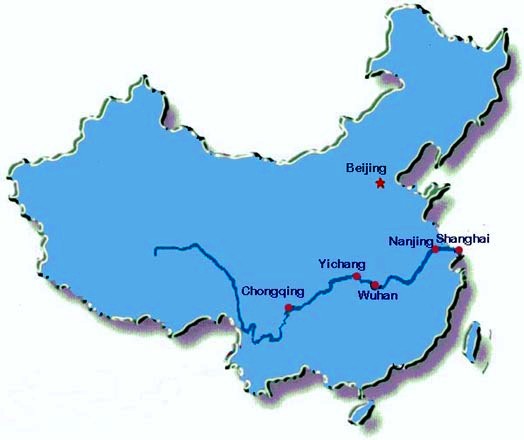 Yangtze River
Yangtze River
Major Battles Along the Yangtze River – 1937-1938
© 2012 Bob Hackett, Sander Kingsepp and Anthony Tully
At 3,900 miles, the Yangtze, or Chang Jiang (“Long River”) is the largest river in China and the third largest in the world. It rises in the wetlands and glaziers of the Qinghai-Tibet Plateau in far western China and flows through eight provinces to the East China Sea, just north of Shanghai. Along its long course more than 700 tributaries from another six provinces join the Yangtze. The river is navigable from its mouth up to a thousand miles by ocean-going vessels and warships. [1]
In 1854, American warships begin patrols along the Yangtze River to show the American flag and support American consulates. After 1890, as the political stability of China deteriorates, America’s naval presence increases. By about 1914, the patrols are equipped with shallow draft gunboats and cooperate with Britian's Royal Navy. American naval forces also engage in anti-piracy patrols and occasionally put ashore landing parties to protect American interests. France, Italy, the German Empire, Austria-Hungary, Russia and Japan also maintain gunboats and larger fleet units in and around China. The United Kingdom has a large fleet stationed in Chinese waters to support its economic interests at Hong Kong, Shanghai and Hankow.
In 1900, northern China is devastated by the Boxer Rebellion. The Boxers murder several hundred foreigners, mostly missionaries and about 50,000 Chinese Christians. For 55 days, foreign diplomats and businessmen, and Chinese Christians barricade themselves in Peking's (Beijing) Legation Quarter. The Boxers and Imperial Chinese troops then lay siege to the Quarter until it is relieved by a mixed force of British and Indian Army, American, French (mostly Indochinese), Italian, German, Russian, Japanese and Austro-Hungarian soldiers, sailors and marines. Later, the United States Navy organizes the South China Patrol, based at Hong Kong, and the Yangtze Patrol, based at Shanghai and then at Hankow. The patrols escort American merchant ships through bandit infested gorges and protect American interests in the interior of China.
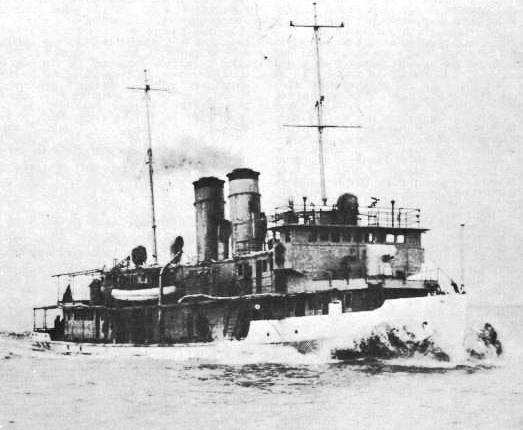 USS GUAM patrolling the Yangtze, 1932
USS GUAM patrolling the Yangtze, 1932
1930:
Yangtze River. American river gunboats USS GUAM (PR-3)(later USS WAKE, IJN TATARA and RCS TAI YUAN), USS TUTUILA (PR-4) and USS PANAY (PR-5) are on constant patrol on the river. They range from Shanghai as far up the Yangtze as above the "Three Gorges" (Xiling, Wu and Qutang). In the spring of 1930, GUAM is at Chungking with British, French and Japanese gunboats.
4 July 1930:
Chinese Civil War. GUAM steams for Yochow and Chenglin to insure the safety of American missionaries and other foreigners in those two cities, then in Communist hands. As GUAM approaches Tungting Lake, she comes under small arms fire near Yochow. A seaman is hit and dies. GUAM's three-inch guns open fire with 34 rounds of HE. The shooters soon flee.
1930-1937:
GUAM is based at various ports along the Yangtze including Chungking, Ichang, Hankow, Shanghai and Kiukiang.
November - December 1937: The Battle of Nanking:
Nanking, then the capital of China, lay in an elbow of the Yangtze to the north and to the west. The city is surrounded by walls about 60 feet high and 30 feet thick with 19 gates, two of which are railway gates. The walls are fitted with machine gun-emplacements. A network of wide, deep defensive trenches is dug in seven semicircular rings that extend 30 miles from the city ending at the Yangtze. The city is defended by about 100,000 mostly untrained conscripts, and some troops who fled the battlefield at Shanghai in mid-November.
20 November 1937:
The Nationalist government announces the relocation of their government to Hankow.
24 November 1937:
Hankow. USS GUAM arrives at Hankow to protect the lives and property of American nationals.
December 1937:
Yangtze. As the Japanese close on Wuhu, GUAM takes part in the transfer of Americans to Hankow.
12 December 1937:
Yangtze. N of Nanking. At about 1340, six Japanese bi-plane bombers and nine bi-plane fighters bomb and strafe anchored river gunboat USS PANAY (PR-5). At 1534, PANAY sinks. Three men are killed and 43 sailors and five civilians wounded. The Japanese also bomb and damage three Standard Oil river barges that PANAY was escorting. Later that day, the Japanese also bomb, but miss, British gunboats HMS CRICKET and HMS SCARAB.
Tokyo. Ambassador Joseph C. Grew lodges a formal protest about the USS PANAY "Incident". The Japanese government accepts responsibility, but claims the attack was unintentional. [2]
13 December 1937: The Fall of Nanking:
The 11th Gunboat Division heads to Xiaguan led by IJN ATAKA. The division returns fire against blistering attacks from Liu Zijiang’s trenches. Gunboats IJN HOZO and SETA are in front and ATAKA, gunboat HIRA and main force destroyers IJN KAWAKAZE and SUZUKAZE follow. The Yangtze River and the riversides are full of routed Chinese boats and rafts. Each gunboat attacks them.
That same day, the Imperial Japanese Army (IJA) completes their encirclement of the city. That day, the IJA 9th and 16th Divisions Division enter via three of ihe city's enormous gates. In the afternoon, two small Imperial Japanese Navy (IJN) fleets arrive on both sides of the Yangtze. That night, Nanking falls.
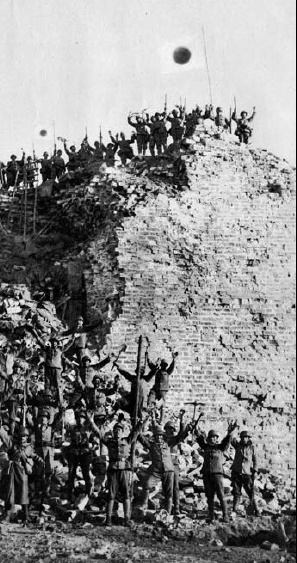 IJA troops raise their flag
IJA troops raise their flag
over one of Nanking's gates
17 December 1937:
At 1400, General Matsui Iwane, CinC, Central China Area Army and LtGen Prince Asaka Yasuhiko (Emperor Hirohito’s uncle), accompanied by Vice Admiral (later Admiral) Hasegawa Kiyoshi (31)(former CO of NAGATO), CinC, China Area Fleet, lead a triumphal parade thorough Nanking. The Japanese assemble 20,000 troops for the event. Soon thereafter, Matsui reprimands the assembled IJA officers for the atrocities in Nanking; but he is in ill-health and returns to Shanghai. Prince Asaka assumes command and the atrocities continue under Imperial sanction.
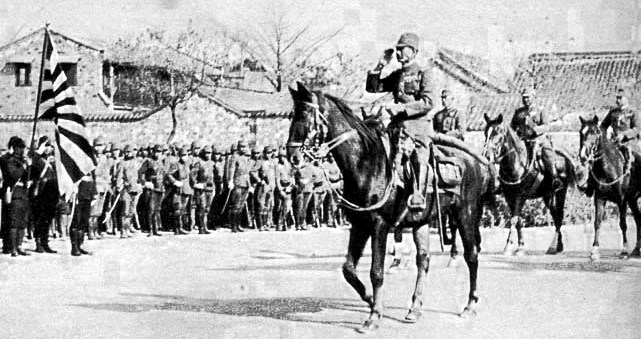 Gen Matsui's Victory Parade in Nanking
Gen Matsui's Victory Parade in Nanking
Late December 1937:
Hangchow (now Hangzhou), 110 miles SW of Shanghai on Hangchow Bay, is a major city of the Yangtze River Delta at the southern end of China's Grand Canal. About 100,000 Chinese troops deployed to defend Hangchow flee and the city falls to the Japanese—the sixth provincial capital taken since the war began in July.
December 1937- February 1938: The "Rape of Nanking":
Over the next six weeks, Japanese troops commit the "Rape of Nanking." Japanese soldiers massacre at least 150,000 Chinese troops and 50,000 civilians under Imperial orders. The killings last until early Feb '38. Their alleged purpose is to so terrorize the population that China capitulates. In this, the Emperor and his advisers seriously underestimate the Chinese people.
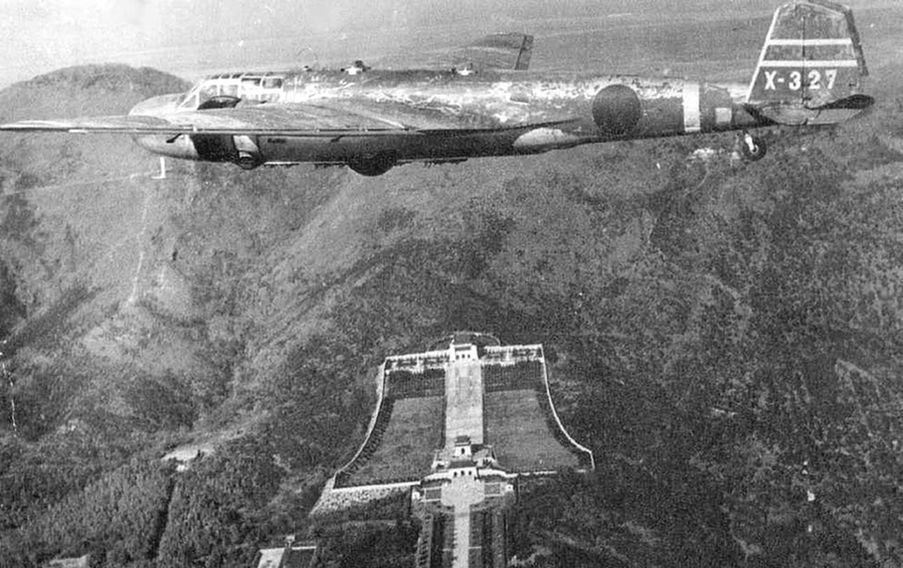 IJNAF G3M of Kisarazu (Tokyo) Kokutai over Sun Yat-sen's Mausoleum at Nanjing, 1938
IJNAF G3M of Kisarazu (Tokyo) Kokutai over Sun Yat-sen's Mausoleum at Nanjing, 1938
January 1938:
After the fall of Nanking to the Japanese, the Chinese government moves about 400 miles west to Hankow. The German Ambassador, Dr. Oskar P. Trautmann, conducts negotiations with Generalissimo Chiang. Acting for Japan, Trautmann offers Chiang" peace terms" under which China is to pay the cost of the war, repudiate Communism, accept Japanese advisers, recognize Manchukuo and collaborate with Japan in various economic projects. Chiang refuses Japan's proposals.
Early June 1938: The Assault on Datun:
The Japanese move up the Yangtze toward Hankow. In early June, they launch their offensive to annihilate the Chinese Army and force their surrender. They move up river gunboats and destroyers to Datun, on the south bank of the Yangtze, approximately 230 miles east of Hankow.
The IJA concentrates and increases its forces to 80,000 men on the north bank of the river.
The IJN concentrates about one hundred vessels on the Yangtze, includlng over thirty armed with medium caliber artillery. The naval vessels stand little more than a mile off shore. For eight days, their guns bombard Chinese fortifications. The bombardment is reinforced by bombing by twenty medium bombers. On the ninth day, a landing is attempted. Concentrated artillery fire covers the movement of Japanese troop transports from behind the naval craft. When the transports approach to within 300-400 yards of the river bank, they lower motor boats carrying infantry landing parties. Japanese artillery fire then switches to the rear of Chinese positions. Nevertheless, the attack is repulsed and repeated attempts fail to effect a landing.
Japanese forces are increased to 100,000 men, the bulk in the Lucbow area. The Japanese main drive is to be westward from Luchow, while a small force is to advance southward towards Antzin to divert the Chinese from the eastern sector where a landing is to be effected.
11 June 1938:
The Battle of Antzin/Anking (now Anqing):
The IJN overcomes barriers in the river, then moves upstream towards Antzin.The city is located about 185 miles below Hankow on the northern shore of the lower Yangtze where the river narrows. The IJN force includes the Third Fleet's armored cruisers IJN IZUMO (F) and IWATE and Rear Admiral (later Vice Admiral) Kondo Eijiro's (36)(former CO of KAGA) 11th gunboat squadron consisting of gunboat IJN ATAKA (F), destroyers IJN KURI, TSUGA and HASU, minelayer IJN YAEYAMA and gunboats IJN HOZU, KATADA, ATAMI, SETA, TOBA, HIRA, FUTAMI, SUMIDA and SAGA.
Overall, the IJA force numbers more than 100 vessels, including over 40 destroyers, minesweepers, naval and river gunboats and blockade boats. The landing force totals about 12,000 men and 80 to 90 guns. The Chinese also have fortifications around Antzin. East of the city there are three permanent forts with field artillery. The capture of Antzin will involve considerable difficulties for the Japanese, but its capture will open the water route to Hankow and threaten to the Chinese right flank.
12 June 1938:
LtGen Okamura Yasuji's 11th Army troops capture the strategic airfield at Antzin. The city falls to the Japanese the next day.
24-26 June 1938: The Battle of Madang":
The port city of Madang (Matang/Matan) lies on the shores of the Yangtze halfway between Nanking and Hankow (now Wuhan). Madang is heavily fortified as designed by Chiang Kai-Shek's German advisors in 1935 including a large blockade line near Madang of over 1600 mines, more than 50 stone reefs and over 300 scuttled ships and sampans. IJN minelayers TSUBAME, KAMOME, NATSUSHIMA and NASAMI and river gunboats SETA, TOBA and KOTAKA sweep mines, lay buoys and bombard Chinese positions. Chinese troops return fire with light arms and cause many casualties among exposed Japanese crewmen.
The Chinese expect Madang to hold out, but LtGen Okamura bribes the local Chinese commander. After heavy IJN naval bombardment, a Special Naval Landing Force (SNLF) lands troop behind the fort and the port falls in only three days. The Japanese then take Hukou before Chinese reinforcements can reach the city. This opens the way for destroyers and gunboats to move further upriver toward Hankow.
15 June 1938: The Battle of Hankow (Wuhan):
Hankow lies just north of where the Han River empties into the Yangtze. Hankow is then China's second largest city with a population of two million, and a major Central China industrial area and river port. It consists of three small cities of Wuchang, Hankow and Hanyang. The Japanese advance on Hankow from the north and northeast.
20 June 1938:
Generalissmo Chiang Kai-Shek orders the dykes of the Yellow River destroyed. The resulting floods displace two million residents, but temporarily stop the Japanese offensive.
6 July 1938: Operation "V" - The Capture of Kiukiang:
Minelayer KAMOME strikes a mine off Pengze while proceeding upriver. The stern is blown off and the entire steering room personnel KIA. KAMOME is towed to safety by TSUBAME.
July 1938:
For two weeks Chinese booms across the river at Matang and Matowchen hold back IJN warships. Then they plow upriver and blast Chinese defenders from Hukow at the top of Lake Poyang, China's second largest lake. Hukow gives the Japanese a jumping-off place for two drives on Hankow. One route leads down the navigable lake to Nanchang, China's main air base which is severely bombed, then to the vital Canton-Hankow rail-line. A more direct route is straight up the Yangtze, but this means fighting along a stream blocked with booms and flanked by mountains with Chinese gun emplacements. The Japanese plan to use this route and request all foreign vessels, including American and British gunboats at Kiukiang, to evacuate the area.
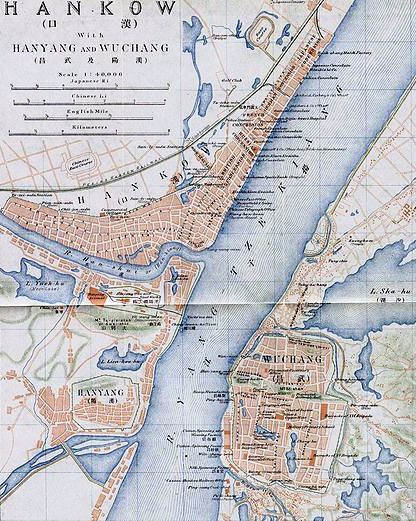 Hankow (Wuhan) in 1915
Hankow (Wuhan) in 1915
21 July 1938: The Battle of Tsiangtsin:
Tsiangtsin, China. The Japanese begin operations with aerial reconnaissance of the city followed by aerial bombardment of Chinese positions. At dawn the next day, the IJA's 106th Division lands a reinforced infantry brigade south of Tsiangtsin. The Chinese launch many counterattacks, but are repelled by the IJA assisted by air cover.
23 July 1938
A detachment of the Japanese 11th Army Group lands east of Jiujiang in Jiangxi and captures Jiujiang three days later.
24 July 1938:
At night, Rear Admiral (later Vice Admiral) Kondo Eijiro’s (36)(former CO of KAGA) Yosuko Force lands troops of the No. 5 Kure SNLF on the banks of the Yangtze. Kondo’s 11th Battle Division provides gunnery support consisting of minelayer IJN YAEYAMA (F), river gunboats IJN ATAKA, SAGA, HASU, HIRA, minelayers NATSUSHIMA, SARUSHIMA, KAWASEMI, DesDiv 11, DesDiv 21’s IJN TSUGA and KURI, TorpBoat Div 1’s KASAGI, HIYODORI, OTORI and HAYABUSA, gunboats IJN HOZU, SETA, ATAMI, FUTAMI and KASIDA, Special Minesweeper Unit 1’s IJN TSUBAME, KAMOME, SUGI MARU and KASIWA MARU and Special Minesweeper Unit 2.
Minelayer YAEYAMA (F) leads the van with TorpBoatDiv 1, MineSweepDiv 1 and MineSweepDiv 2. Kondo’s Guard Unit is made up of TorpBoatDiv 11 and TorpBoatDiv 21. Seaplane tenders IJN KAMIKAWA MARU and NOTORO provide air cover. Threatened with envelopment, Chinese forces withdraw.
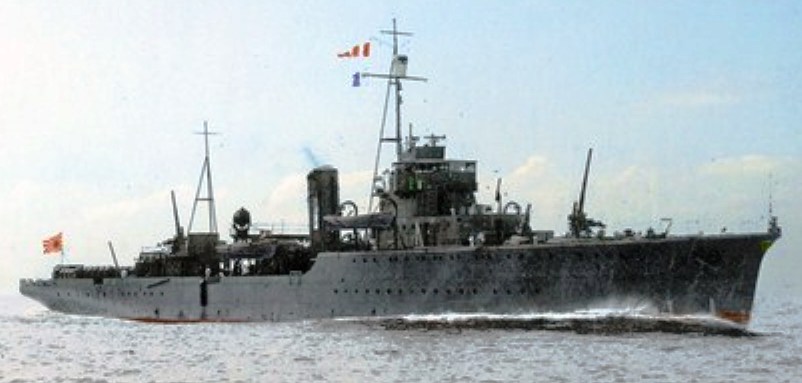 Minelayer IJN YAEYAMA
Minelayer IJN YAEYAMA
Late July 1938:
The Japanese advance on Wuchang and Hanyang from the south and southeast. The Chinese mass about 800,000 ill-equipped and largely untrained troops in a poorly organized effort to defend Hankow. The Battle of Hankow (Wuhan) later becomes the longest, largest and one of the most significant battles of the Second Sino-Japanese War.
August 1938:
Near Kuikiang, 450 miles upstream from Shanghai. Coal-burning river gunboat USS MONOCACY (PG-20), recently on refugee work, is low on food and fuel and is scheduled to go to Shanghai for provisioning. By treaty, American gunboats have the right to patrol the Yangtze River, an international waterway. The Sino-Japanese War does not legally affect these rights. Nevertheless, before ordering this long trip through Japanese-controlled waters, Admiral Harry E. Yarnell (USNA 1899), CinC, United States Asiatic Fleet, asks sanction from Vice Admiral (later Admiral) Oikawa Koshiro (31)(former CO of TAMA), CinC, IJN China Fleet. Oikawa firmly refuses. He signals Yarnell that MONOCACY may interfere with the Japanese plans or strike a Chinese mine or mistakenly be fired on by Japanese shore batteries and other reasons. Despite the refusal, Yarnell orders gunboat USS OAHU (PR-6) to steam up river and relieve MONOCACY.
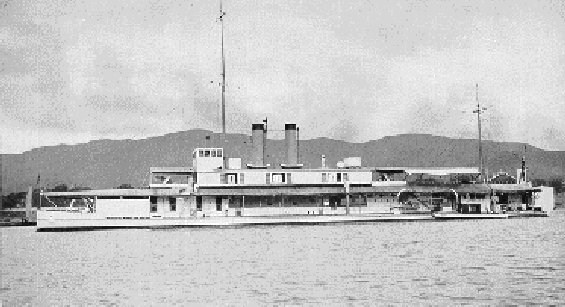
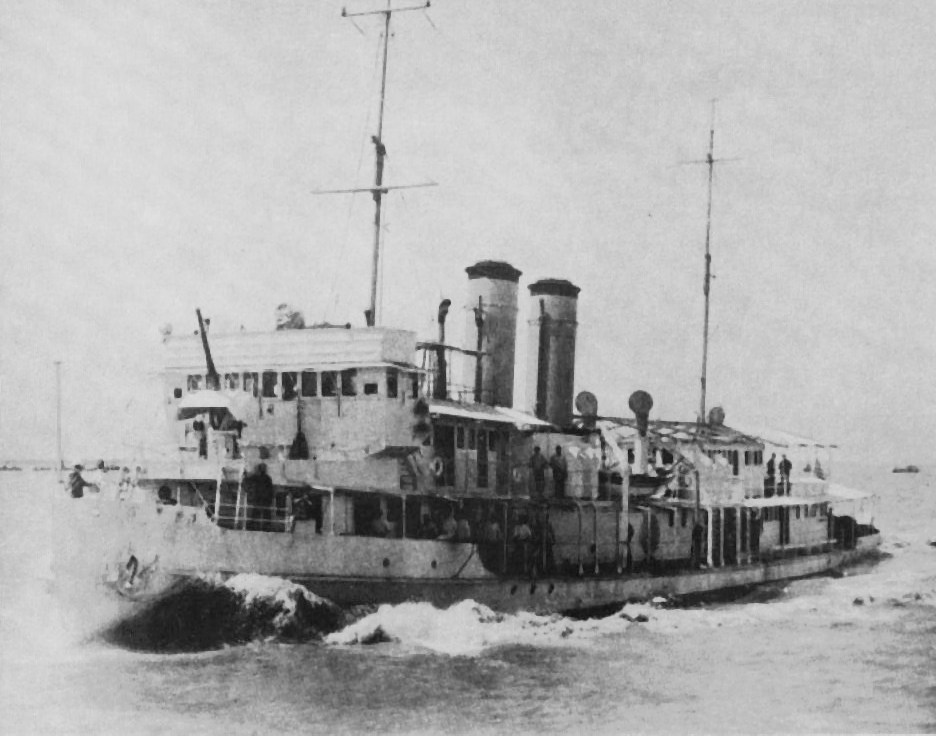 Gunboats USS MONOCACY and USS OAHU
Gunboats USS MONOCACY and USS OAHU
29 August 1938:
Kiukiang. Several Chinese mines explode within 50 yards of MONOCACY and shower the gunboat with fragments. She is held at the port until the IJN completes mine sweeping operations some days later.
Early September 1938:
The Kuomintang (KMT) government flees Hankow. 40,000 Chinese evacute Hankow in boats and junks or overland in trucks and handcarts to Changsha, capital of Hunan.
October 1938:
Hankow. One-armed French Jesuit, Father Robert Jacquinot de Besange, who a year earlier established "the Jacquinot Zone,” in Shanghai, arrives to establish another safe area for refugees. He arranges to use the French Concession and former British, German and Russian Concessions as his new safety zone in which he shelters some 100,000 Chinese.
The retreating Chinese, pursuing a "scorched earth" policy, dynamite and set fire to anything of value to the Japanese. Factories are set ablaze and the Japanese Consulate is blown up. Scores of Chinese, trapped in the areas, are killed. Reservoirs are demolished but Father Jacquinot persuades the Chinese to spare the Hangkow pumping station.
Father Jacquinot greets the first IJN vessels that arrive at Hankow's Bund. Father Jacquinot informs the naval commander about the refugee area for Chinese and receives assurances that it will be respected. In return, Father Jacquinot and a British naval officer lead the Japanese troops on a ceremonial march through the city to the native quarter. Unfortunately, long standing rivalry between the IJA and IJN intervene. When the army columns belatedly arrive in Hankow, the IJA commanders decide to use buildings in the refugee zone as troop billets and Father Jacquinot, is ordered out. Fortunately, a new safety zone soon is established in the Chinese native sector on the Han River.
25 October 1938: The Fall of Hankow:
LtGen Okamura's troops capture Hankow and Wuchang. With the seizure of Hankow, Japan now controls China’s five largest cities including Beijing and Tianjin in the north, Shanghai in the east and Canton in the south.
26 October 1938:
Hanyang also falls to the IJA.
27 October 1938:
Generalissimo Chiang and his KMT set up their provisional capital at Chungking (Chongqing). Soon, the IJAAF and the IJNAF increase the tempo of their bombing raids of the new capital.
30 March 1940:
Nanking. Japan sets up a puppet Chinese Government headed by a former KMT general, turned Japanese collaborator, Wang Ching-wei.
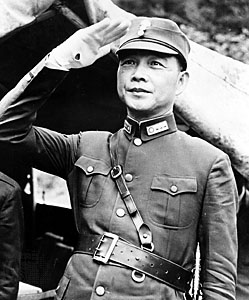
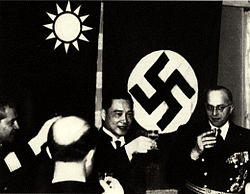 (Wang Ching Wei as a KMT officer and later with Nazis in Nanking).
(Wang Ching Wei as a KMT officer and later with Nazis in Nanking).
Authors' Note:
[1] The world's longest river is the Nile of Egypt, followed by South America's Amazon. The Yangtze is closest in length to the United States' Mississippi River.
[2] The sinking of the USS PANAY, also known as the "China Incident", is the subject of a forthcoming separate segment of this series.
Photo credit of GM3 goes to "Romantic Technofreak" and location and unit ID go to Eugen Pinak of Ukraine.
-Bob Hackett, Sander Kingsepp and Anthony Tully
Back to Rising
Storm Page















